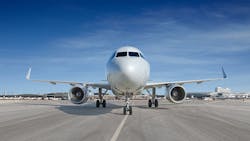American Airlines participates in AI-powered contrail avoidance study
FORT WORTH, Texas - American Airlines in Fort Worth, Texas, announced the results in which it participated. The study was what American called "a first-of-its-kind" on contrail avoidance , with results verified by satellite imagery, aimed at reducing aviation’s environmental impact.
Contrails form when airplanes fly through layers of humidity, and they can persist as cirrus clouds for minutes or hours depending on the conditions. While these extra clouds can reflect sunlight back into space during the day, certain contrails can trap heat within the Earth’s atmosphere at night.
The study, led by Google Research and Breakthrough Energy and with support from American, tested whether it is possible to identify atmospheric zones that are likely to create contrails. The team then determined whether pilots could avoid making contrails in flight when supplied with data regarding the location of these zones.
After collecting large data sets — such as satellite imagery, weather and flight path data — Google Research and Breakthrough Energy used artificial intelligence (AI) to develop contrail forecast maps. A small group of American pilots flew 70 flights over six months, using AI-based predictions to make small modifications to routes that were projected to create contrails.
After the test flights, Google Research analyzed satellite imagery and found that flights where pilots used the AI predictions to avoid creating a contrail reduced contrail formation by 54%, as measured by distance, compared to flights where pilots did not use the predictions. This first proof point — albeit on a small number of flights — shows that a commercial flight can verifiably avoid creating a contrail. Additional research is necessary to determine if this success can be replicated and scaled.
